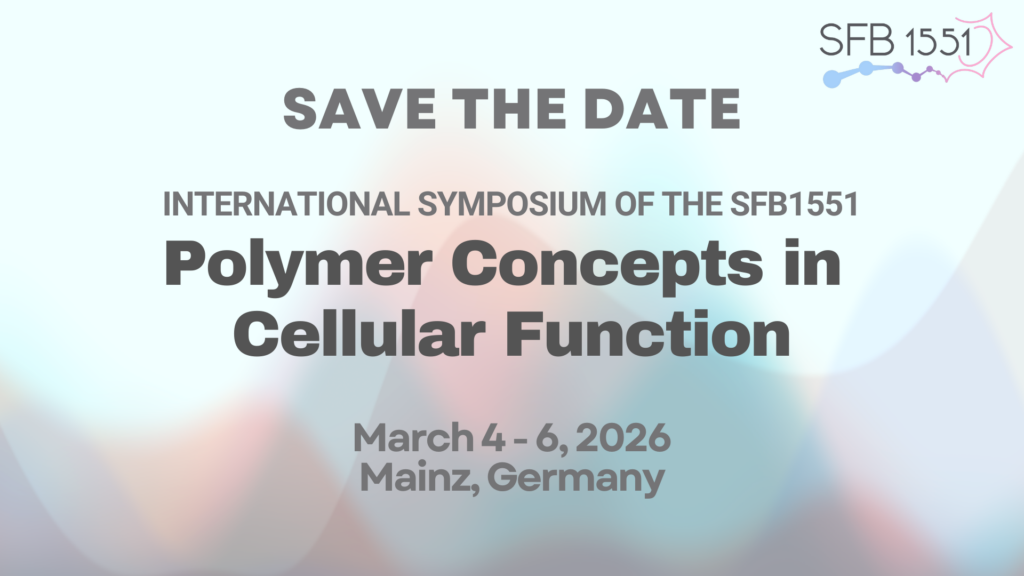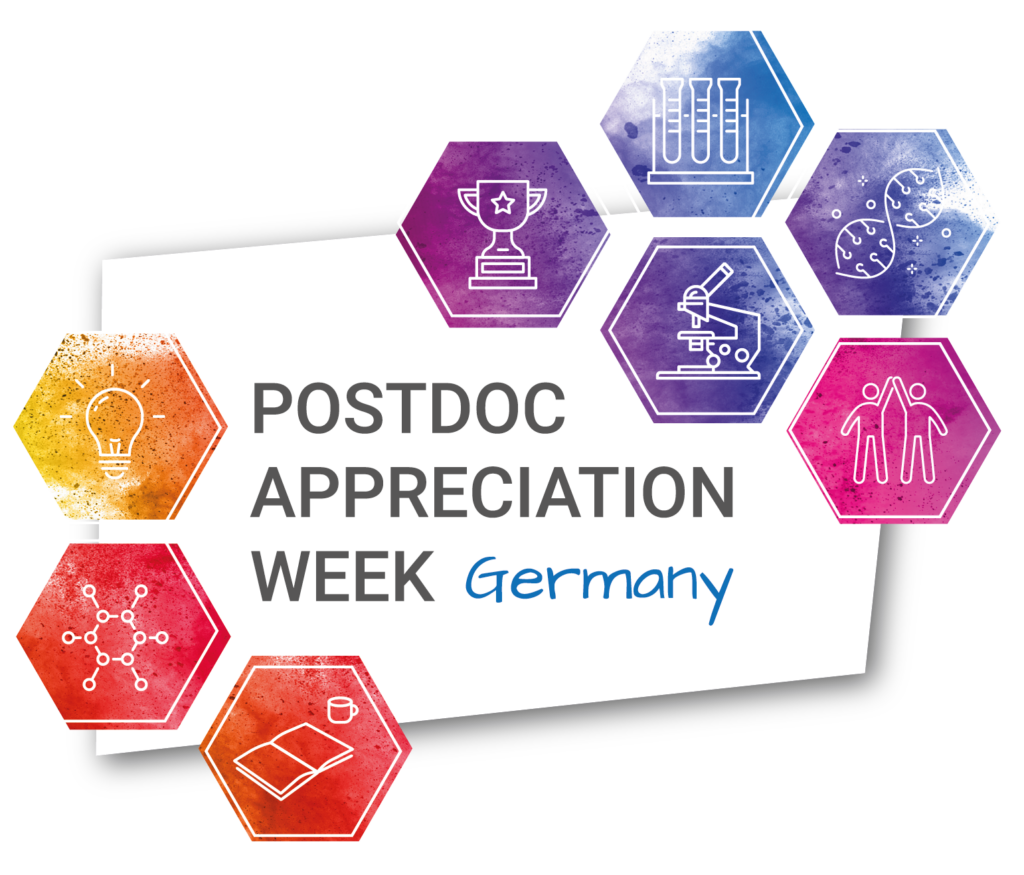SAVE THE DATE! We are thrilled to announce that the...
Polymer Concepts in Cellular Function
The SFB1551 would like to aknowledge the postdocs in the...
Sandra Schick, group Leader at the IMB (SFB1551; Project R11)...
Today, Sina Wittmann got the Labbot installed in her Lab,...
Another SFB1551 paper is out! “Cracking the Code: Reprogramming the...
Check out the new article from Katja Luck’s Lab on...
Another SFB1551 paper is out! “Tuning the Functionality of Designer...
On July 10th and 11th, SFB1551 was actively involved in...
On June 20th, we welcomed our guest speaker, Professor Matthias...
Scientific Focus
Essential biological processes such as transcription from DNA to RNA and translation to proteins (as shown on the right) are governed and depend on the interplay of multiple biomolecules in a complex environment. The interactions of the biomolecules cover a wide spectrum of interaction types, ranging from dimeric interactions to large complexes up to the hierarchy of packing and unpacking of the genome. In this Collaborative Research Centre (Sonderforschungsbereich, SFB) life scientists and polymer scientists will jointly study biomolecules as biopolymers with a focus on their polymeric nature. As shown in recent research, the polymeric nature of biopolymers gives rise to phenomena like phase separation, phase transitions and complex organelle architectures in cells, whose implications for cellular functions are yet to be fully understood. By applying theoretical and experimental concepts from polymer science, this initiative will allow scientists to gain new perspectives on biological phenomena, thereby opening new ways to understand the molecular basis of cellular dysfunction in aging and age-associated diseases, such as neurodegenerative disorders and cancer.

From DNA to RNA to proteins: Essential biological processes which are orchestrated by biopolymers. © Nike Heinß/SFB1551

Very diverse biochemical structures, ranging from amino acids to whole nucleosomes, can be understood and modeled as beads with different size and characteristics from a polymer scientist's point of view. © Nike Heinß/SFB1551
Polymers consist of similar small units - the monomers. In biology terms, a monomer could range from an amino acid over small domains (like Ubiquitin) to whole nucleosomes. As shown on the left, from a polymer scientist's point of view, these units can be modeled as elements of a polymer chain with varying size and characteristics. Thus for very different biomolecules, there might be common behaviours or characteristics goverened by their polymeric nature. By forming interdisciplinary teams, the SFB 1551 aims at expanding the polymer scientist's knowledge and tool box for studying complex heteropolymers in complex systems on all length scales as well as expanding the biologist's understanding on how polymer concepts govern cellular function.
our latest news
We also invite you to register to our exciting events, don't miss out on some cool Science!













